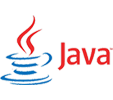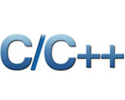Author: Brijesh
Date: 05-11-2025
Meta Description: Discover why founders in Singapore—from Marina Bay to Jurong and Tampines—partner with Indian app developers in 2025. Learn about cost advantages in SGD, time-zone overlap (SGT ↔ IST), speed-to-market, quality, security, and scalable app development services. Compare pricing, models, stacks, and KPIs with ready-to-use tables and calls-to-action.
Singapore’s startup scene is sizzling in 2025. Founders across Marina Bay, Orchard, Jurong, Tampines, Woodlands, Punggol, Clementi, Bukit Timah, and Changi are sprinting to ship MVPs, raise rounds, and expand regionally across Southeast Asia. To move faster and stretch capital, many teams are turning to an Indian app developer or a specialist mobile app development company in India for design, build, and growth support. This isn’t just about lower rates—it’s a proven strategy for speed, quality, and resilience.
Below are the 10 biggest reasons Singapore startups are hiring app developers India in 2025—plus tables you can paste into your internal memo or investor deck. You’ll find cost comparisons in SGD (S$) and INR (₹), delivery models, tech stacks, KPI frameworks, and sample timelines. If you’re looking for a trusted partner, consider Developers App India—a results-focused app development company in India offering transparent pricing, milestone-based delivery, and post-launch growth services.
Quick Summary: Why Singapore ↔ India Works in 2025
- Time-zone advantage: Singapore Time (SGT, UTC+8) and India Standard Time (IST, UTC+5:30) differ by only ~2.5 hours—ideal for live stand-ups and rapid feedback loops.
- Capital efficiency: Convert costs in SGD and see clear savings without compromising quality.
- Scaling support: Indian teams bring deep benches and battle-tested DevOps to handle growth spurts and new product lines.
- Regional fit: Experience with APAC compliance, payments, and languages accelerates go-lives in Singapore and beyond.
Reason #1: Capital Efficiency Without Cutting Corners
When burn matters, founders in Singapore—from seed to Series B—opt for an app development company in India to lengthen their runway. The goal isn’t “cheap”; it’s efficient: more validated experiments per S$ spent, with unit economics that impress investors in Raffles Place boardrooms.
| Role | Typical Rate (Singapore) | Typical Rate (India) | Notes |
|---|---|---|---|
| Senior Mobile Engineer | S$85–S$140/hour | S$35–S$70/hour (₹2,100–₹4,300) | Flutter/React Native/Kotlin/Swift |
| Full-Stack Engineer | S$90–S$150/hour | S$38–S$75/hour (₹2,300–₹4,600) | Node.js, Laravel, Python, Go |
| UI/UX Designer | S$80–S$130/hour | S$30–S$60/hour (₹1,800–₹3,700) | Design systems, accessibility |
| QA Automation | S$70–S$110/hour | S$25–S$50/hour (₹1,500–₹3,000) | Playwright/Appium/Cypress |
Outcome: A leaner budget in SGD translates to more sprints, more features, and a stronger fundraising story for teams in Marina Bay and Orchard.
Reason #2: Time-Zone Overlap for Fast Feedback
SGT and IST are separated by ~2.5 hours. That’s ideal for daily stand-ups, sprint planning, and same-day feedback loops—without red-eye calls. When your product manager is in Tampines or Jurong, and your engineering squad is in India, progress stays live and collaborative.
| City/Area (SG) | Typical Founder Work Window (SGT) | Matching Dev Window (IST) | Overlap (approx.) |
|---|---|---|---|
| Marina Bay / CBD | 9:00–18:00 | 6:30–15:30 | ~7 hours |
| Jurong / Clementi | 10:00–19:00 | 7:30–16:30 | ~7 hours |
| Tampines / Punggol | 8:30–17:30 | 6:00–15:00 | ~7 hours |
Outcome: Your PM in Woodlands can file feedback at lunch and see fixes by late afternoon. That cycle speed compounds weekly.
Reason #3: Deep, Diverse Talent for Any Stack
Partnering with a mobile app development company India unlocks access to specialists across mobile, web, backend, data, and DevOps. Whether you’re shipping a fintech wallet for Raffles Place, a logistics app in Jurong Port, or a consumer marketplace in Orchard, you can staff for the exact skill mix—fast.
| Layer | Common Choices | Why It Works |
|---|---|---|
| Mobile | Flutter, React Native, Kotlin, Swift | Speed + native performance options |
| Web | Next.js, React, Vue, Svelte | SEO-friendly SSR/ISR patterns |
| Backend | Node.js, Laravel, Django/FastAPI, Go | Proven frameworks, quick APIs |
| Data | Postgres, MySQL, MongoDB, Redis | Reliable, scalable stores |
| Cloud/DevOps | AWS, GCP, Azure, Kubernetes | Elastic infra, cost control |
Reason #4: Speed-to-Market & Release Discipline
Singapore founders value cadence. Indian teams accustomed to product-led delivery will push a weekly or biweekly release drumbeat, with the CI/CD and test coverage you’ll need when traffic spikes in Bugis or Marina Bay Sands.
| Practice | What It Means | Impact |
|---|---|---|
| CI/CD | Automated build, test, deploy | Fewer regressions, faster releases |
| Feature flags | Rollout toggles per segment | Safe experiments |
| Observability | Logs, metrics, tracing | Quick incident response |
Reason #5: Security, Compliance & Payments for APAC
Expect a seasoned Indian partner to design auth, data protection, and payment flows suited for Singapore and regional rollouts. Think SSO/MFA, encryption, role-based access, and documented audit trails. Payments? Multi-gateway setups with reconciliation that your finance lead in Bukit Timah will appreciate.
| Security Area | Best Practice | Founder Benefit |
|---|---|---|
| Auth | SSO (OAuth/SAML), MFA, device checks | Lower account risk |
| Data | TLS + at-rest encryption, KMS keys | Trust & audit readiness |
| Audit | Immutable logs, PII masking in non-prod | Faster enterprise sales |
Reason #6: Mature Agile, Clear Documentation, and Culture Fit
Indian teams with global delivery experience bring crisp SRS docs, annotated wireframes, acceptance criteria, and demo discipline that suits founders in Orchard and operators in Tanjong Pagar. It’s “enterprise-grade” without heavyweight bureaucracy.
| Artefact | Purpose | Founder Advantage |
|---|---|---|
| SRS + Wireframes | Shared understanding early | Less rework |
| Test plans | Functional + device coverage | Confidence at launch |
| Runbooks | Ops steps, escalation | Lower downtime |
Reason #7: Total Cost of Ownership (TCO) That Favors Runway
It’s not just hourly rates. The right mobile app development services team will design for performance, caching, and observability so your cloud bill stays friendly—even as users in Paya Lebar and Pasir Ris climb.
| Cost Driver | Bad Pattern | Optimized Pattern | Effect on S$ |
|---|---|---|---|
| Queries | Unbounded ad-hoc reads | Materialized views, caching | Lower DB spend |
| Media | Raw uploads everywhere | Transform + CDN | Cheaper egress |
| Compute | Always-on max nodes | Autoscaling, serverless | Pay for peaks only |
Reason #8: Product Strategy, Not Just Coding
Top Indian partners don’t just ship tickets. They help founders in Marina Bay and One-North prioritize MVP scope, define “Outcome → KPI → Feature” maps, and design growth loops (referrals, notifications, and lifecycle messaging).
| Stage | Focus | What to Ask For |
|---|---|---|
| Pre-MVP | Problem validation | User interviews, prototype tests |
| MVP | Time-to-market | Must-have features only, flags for the rest |
| Post-MVP | Activation & retention | Funnels, A/B tests, cohorts |
Reason #9: Elastic Teams for Scale-Ups and Corporate Pilots
Need to add a web team for your new B2B portal in Changi Business Park? Or spin up a data squad for real-time analytics? With a mobile app development company in India, you can scale squads up or down by module—without months of hiring.
| Module | Typical Team | Duration | Deliverables |
|---|---|---|---|
| Mobile App v1 | PM, UX, 2 devs, QA | 8–12 weeks | iOS/Android + backend |
| Merchant Web | PM, FE, BE, QA | 6–10 weeks | Portal + APIs |
| Analytics | Data eng, BE, BI | 4–8 weeks | Dashboards + events |
Reason #10: Proven Playbooks for APAC Go-To-Market
From localizing content for Bahasa Indonesia to integrating regional payment methods and logistics partners, Indian teams with APAC experience de-risk your launch. That makes a difference whether you’re piloting in Toa Payoh or scaling across Jakarta and Kuala Lumpur.
| APAC Factor | Implementation | Result |
|---|---|---|
| Localization | i18n, language packs, RTL-ready | Faster market entry |
| Payments | Cards, PayNow, wallets, BNPL | Higher conversion |
| Delivery/Logistics | Partner APIs + webhooks | Reliable post-purchase ops |
Cost Scenarios (SGD & INR)
Every project is unique, but these indicative budgets help founders in Orchard, Jurong, and Tampines plan realistically.
| Scope Tier | What You Get | Estimated Cost (S$) | Estimated Cost (₹) | Timeline |
|---|---|---|---|---|
| MVP | Mobile app + basic backend, CI/CD, QA | S$12,000–S$28,000 | ₹720,000–₹1,680,000 | 6–10 weeks |
| Growth | + Web portal, analytics, event tracking | S$28,000–S$60,000 | ₹1,680,000–₹3,600,000 | 10–16 weeks |
| Scale | + Multi-tenant, SSO/MFA, observability | S$60,000–S$140,000+ | ₹3,600,000–₹8,400,000+ | 16–24 weeks |
Note: Currency conversions reflect rounded 2025 assumptions; request a fresh quote for current rates.
Engagement Models (Pick What Fits Your Stage)
| Model | Best For | Pros | Considerations |
|---|---|---|---|
| Fixed Scope | Well-defined MVP | Budget certainty | Change control needed |
| Time & Materials | Exploratory builds | Flexibility | Stay on top of scope |
| Dedicated Squad | Ongoing product roadmap | Velocity & domain memory | Monthly commitment |
12–14 Week Sample Timeline (Singapore ↔ India)
| Phase | Weeks | Highlights | Exit Criteria |
|---|---|---|---|
| Discovery & SRS | 1–2 | Workshops (SGT/IST), wireframes, SRS | Scope sign-off |
| Build Sprint 1 | 3–5 | Auth, core flows, API baseline | Demo + test pass |
| Build Sprint 2 | 6–8 | Payments/integrations, analytics | Demo + test pass |
| Hardening | 9–10 | Perf, security, edge cases | Regression green |
| Pilot & Launch | 11–12 | Staged rollout, crash-free KPI | >99.5% crash-free sessions |
| Growth Loop | 13–14 | A/B tests, lifecycle messages | Activation/retention lift |
KPIs to Prove Product-Market Fit
| Funnel | Metric | Target (first 60–90 days) |
|---|---|---|
| Reliability | Crash-free sessions | >99.5% |
| Acquisition | Install → Sign-up | 30–60% (use social login) |
| Activation | Sign-up → Key action | 40–70% |
| Retention | Day-30 retained | 15–30% (category-specific) |
| Monetization | Paid conversion / ARPU | Set baselines; iterate weekly |
Risk & Mitigation for Cross-Border Builds
| Risk | Signal | Mitigation |
|---|---|---|
| Scope churn | Backlog grows mid-sprint | MoSCoW priority, feature flags |
| Quality dips | Bug backlog rises | Automation, nightly builds, SLAs |
| Communication lag | Slow replies | Daily SGT↔IST stand-up, shared boards |
For Every Neighbourhood: Tailored Use Cases
- Marina Bay / Raffles Place: Fintech & B2B SaaS—security audits, SSO/MFA, complex billing.
- Orchard / Somerset: D2C, eCommerce—headless storefronts, blazing PDPs, BNPL options.
- Jurong / Tuas: Logistics & industrial—route optimization, IoT device APIs, dashboards.
- Tampines / Pasir Ris: Family services & edtech—parent apps, multilingual content, analytics.
- Woodlands / Yishun: Marketplaces—matching engines, escrow wallets, KYC flows.
- Punggol / Sengkang: Social & community—realtime chat, groups, moderation tools.
FAQ for Singapore Founders
Will there be language or cultural friction?
Most senior Indian engineers are accustomed to APAC delivery and communicate clearly in English. With daily SGT-friendly stand-ups, collaboration feels local.
How do we manage IP and code ownership?
Use NDAs, MSAs, and ensure your Git repositories and cloud accounts are under your organization with role-based access. Your app development services partner pushes code via PRs for review.
Can we keep UX in Singapore and engineering in India?
Absolutely. Many teams split: product & design near users (e.g., One-North), engineering in India for velocity and cost control.
What about on-site sessions?
For critical phases (discovery, user testing, enterprise pilots), plan in-person sessions in Marina Bay or at your office; the rest runs smoothly remote.
SEO-Rich Call-to-Actions (CTAs)
- Need an MVP in 8–12 weeks? Partner with a proven mobile app development company in India that understands Singapore timelines and compliance.
- Already have traction? Add a dedicated squad for mobile app development services—scale faster without hiring overhead.
- Comparing bids? Ask us for a scope-to-S$ proposal with milestones, test coverage, and performance SLAs: Developers App India.
Why Choose Developers App India
We’re a Singapore-friendly partner with a deep bench of Indian app developer talent. Expect discovery workshops on your SGT schedule, crisp documentation, weekly demos, and post-launch growth support.
| Capability | What You Get | Business Outcome |
|---|---|---|
| Full-Stack Product Teams | PM, UX, mobile/web, backend, QA | Velocity + quality |
| Security by Design | RBAC, MFA, audit trails, runbooks | Enterprise readiness |
| Data & Analytics | Events, dashboards, experiments | Faster PMF discovery |
| Cloud Efficiency | Autoscaling, caching, CDN | Lower S$ TCO |
Ready to build? Talk to a trusted mobile app development company India that delivers real outcomes for Singapore startups.
Copy-Paste RFP Checklist (Use This for Vendor Comparisons)
- Provide 2 recent case studies relevant to Singapore (payments, logistics, SaaS).
- Share SRS and test plan samples (redacted).
- Outline security controls (SSO/MFA, encryption, audit, DR).
- Confirm code ownership, repo access, and handover plan.
- Detail CI/CD, coverage metrics, and performance budgets.
- Propose a 12–14 week plan with weekly demos (SGT-friendly).
- List team CVs with seniority and availability.
- Quote in SGD and INR with milestone tranches.
Conclusion: Build Smart, Ship Faster, Spend Wisely
From Marina Bay to Jurong, Tampines to Woodlands, Singapore founders are choosing India for product velocity, capital efficiency, and serious engineering maturity. The 2.5-hour time difference (SGT ↔ IST) creates a “nearshore” feel; the breadth of talent covers every stack you’ll need; and the run-ready delivery playbooks keep your roadmap on track. Whether you’re aiming for a seed-stage MVP or a scale-stage refactor, partnering with an expert app development company in India is one of the most ROI-positive decisions you’ll make in 2025.
Next Steps:
- Shortlist features for your MVP and map them to KPIs.
- Pick an engagement model (Fixed/Time & Materials/Dedicated Squad).
- Request a two-currency quote (S$ and ₹) aligned to milestones from Developers App India.
Final CTA: Let’s Build Your Singapore-Ready App
Need a reliable team that ships fast, communicates on your SGT schedule, and respects your burn? Work with Developers App India—the best choice for “app developers India” and “mobile app development company in India” searches. We’ll help you turn your idea into a product users in Orchard, Marina Bay, Jurong, and beyond will love—on time and on budget.
49Your choice of weapon
Build your Apps for any Platform
We to code. It's our passion










you can also reach us at our given
email address or phone number.




